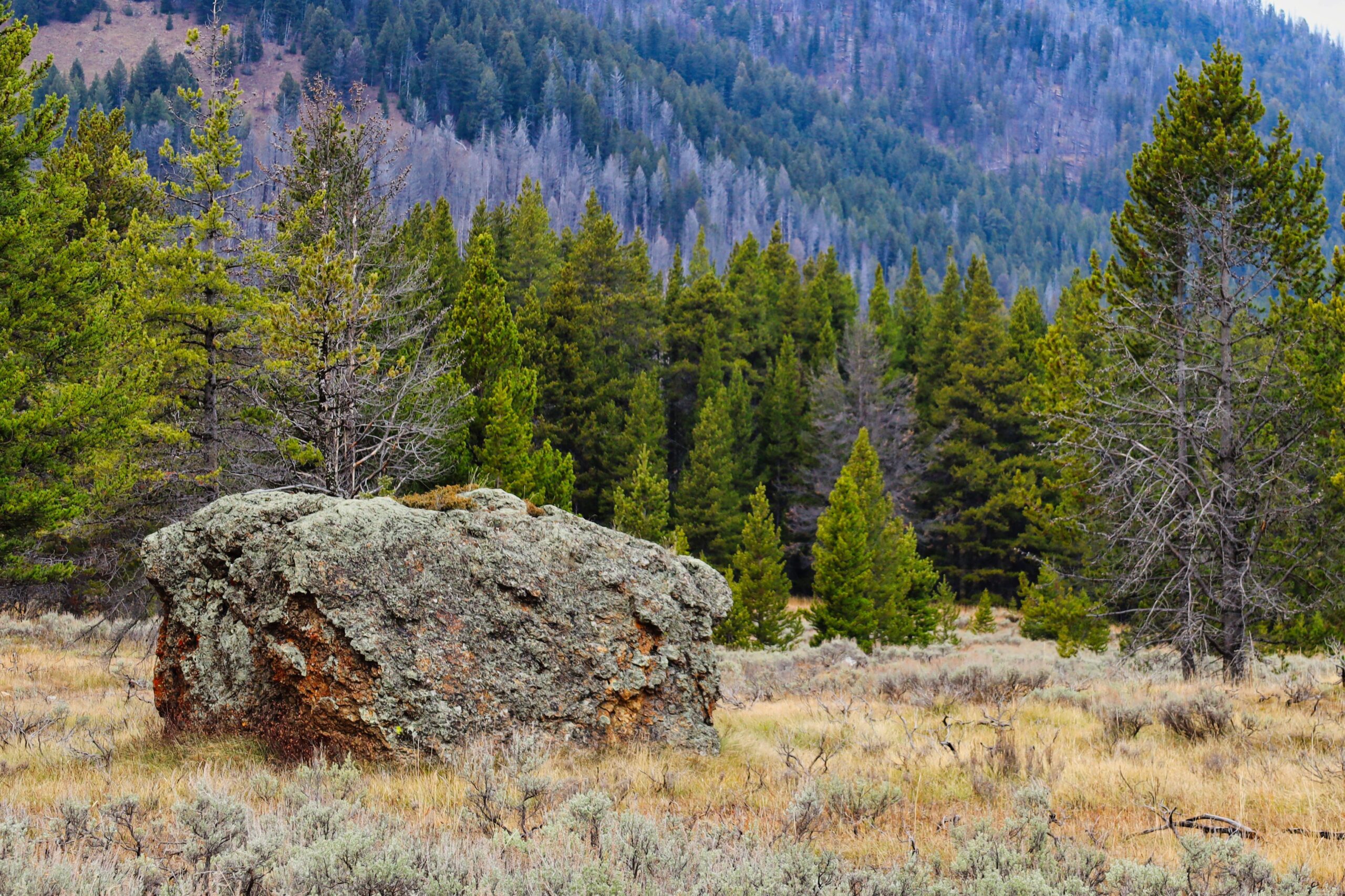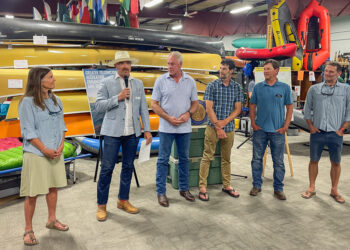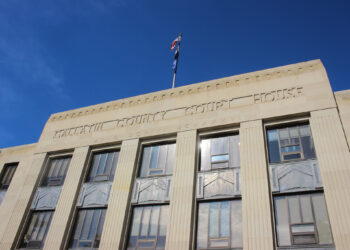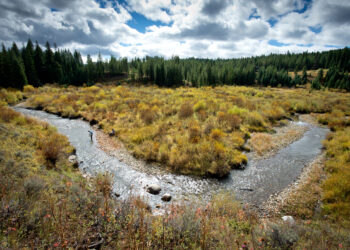By Paul Swenson EBS COLUMNIST
Imagine being a geologist during the late 1700s to early 1800s. James Dutton in Scotland has just published books on the “Theory of the Earth.” He was going against the dogma of the day: a static, young Earth that’s only 6,000 years old. His theories were based on observations made on his family farm and the surrounding countryside. One location displayed upturned strata of sedimentary rocks truncated and overlain by horizontal layers of other sedimentary rocks. He noticed the sands and gravels in these rocks were remnants of even older rocks. Dutton proposed that entire mountain ranges were built up by some force, then eroded by streams and rivers and that this cycle happened many times.
One of the major ideas that came from his years of study is called Uniformitarianism: a theory that physical processes that occur today behaved the same way in the past. Not a huge leap of faith to believe this would be true, but for most scientists and general populous during Dutton’s time, it was unthinkable. He studied how slow erosion occurred and knew that the earth had to be really, really old.
So let’s take a walk across the countryside of Scotland. One notices rolling hills with large rocks dispersed throughout the view. Walking over to one of the rocks, it is found to consist of a rock type that is not found at this locale. The closest outcrop of this rock is over 50 miles away. How did they get here? This is not usual. Perhaps they could be described as erratic, something with unpredicted or unexpected behavior.
The geologists at the time struggled to come up with an explanation. Was it moved by man? Was it a result of a flood? Some even thought these erratic rocks were a result of the “Great Flood.” This was called “diluvial” deposition, meaning deposited by a flood. The only problem: there was no other evidence for flooding anywhere else close to these rocks.
It wasn’t until 1840 when a Swiss-American, J.L.R. Agassiz, described that glacial processes were responsible. At the time, glaciers were thought to only exist in the high alpine regions of the world, so Agassiz’s hypothesis was not readily accepted. For example, examples of erratic rocks can be found in Central Park, N.Y., Plymouth Rock, Mass., and all throughout the Midwest. Some of these rocks are hundreds of miles from their sources. They got there by raftingalong with continental size ice sheets during the last glacial period.
The Big Sky region hosts some glacial erratic rocks. There are three conspicuous areas close by: the Bacon Rind region, the upper meadows along Taylor Fork, and the lower Lamar Valley in Yellowstone National Park.
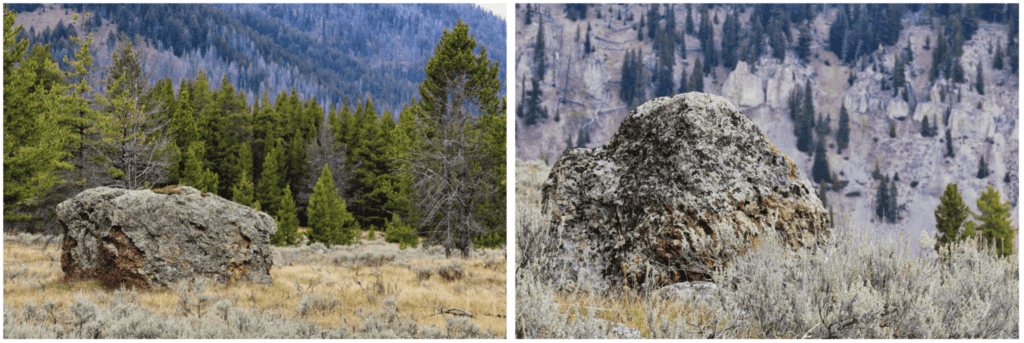
The rock type of the Bacon Rind erractics can be found up the drainage about three to 10 miles to the west, which means the small glacier moved these rocks that distance down the valley. In Taylor Fork they have been moved about 10 miles from the Taylor-Hilgard range, and the rocks in the Lamar Valley have been transported up to thirty miles from the top of the Beartooth range.
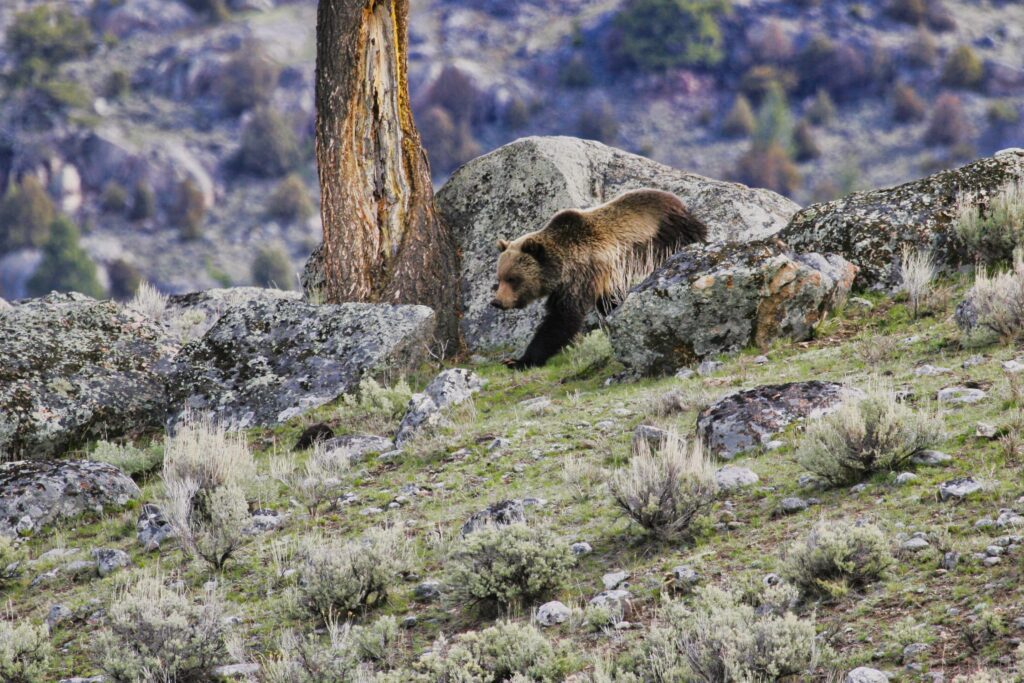
Referencing back to an article published last October in EBS, the glaciers of the greater Yellowstone region left piles of rock and gravel called moraines. This material moved along with the ice, and as the ice melted at the terminus, accumulated into piles and small hills known collectively as hummocky topography. This terminology can be traced back to its Scottish origin in the mid 1500s. Little did these Scots know that their word describing small conical hills would be used as a common geological term hundreds of years later.

So when you are out and about this week, look for hummocky topography with large rocks that seems out of place. Walk over to one of these rocks and you could feel a little erratic without having to blame the change in weather.
Paul Swenson has been living in and around the Big Sky area since 1966. He is a retired science teacher, fishing guide, Yellowstone guide and naturalist. Also an artist and photographer, Swenson focuses on the intricacies found in nature.



